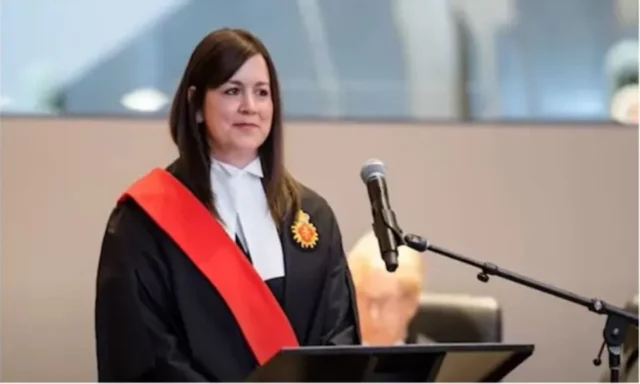For the first time since its founding 147 years ago, the highest court of Canadians has a person of indigenous origin in its seats. Michelle O’Bonsawin was sworn in Thursday as a justice of the Supreme Court of Canada. Prime Minister Justin Trudeau announced his nomination on August 19. After an appearance before a parliamentary committee and obtaining the approval of Mary Simon, Governor General of Canada, the 48-year-old lawyer took office. Five out of the nine justices currently serving have been nominated by Justin Trudeau.
O’Bonsawin was born in the town of Hammer (Ontario) and belongs to the Abenaki people; her family comes from the Odanak reservation (located in central Quebec). She graduated as a lawyer from Laurentian University and worked, among other places, in legal aid clinics, the Canadian Institute for the Administration of Justice and the Royal Canadian Mounted Police, focusing especially on issues related to human rights, labor disputes and mental health. In 2017, she was appointed as a judge of the Ontario Superior Court. She holds a JD from the University of Ottawa and speaks English, French, and Abenaki.
On nomination day, Trudeau noted that Michelle O’Bonsawin was selected “after an open and nonpartisan process,” adding that Ella O’Bonsawin “will bring invaluable insights and contributions” to the highest court in the land. Federal Justice Minister David Lametti referred to a “historic moment” both for the Supreme Court and for Canada.
Rose Anne Archibald, head of Canada’s Assembly of First Nations, said O’Bonsawin is a qualified choice, stressing that it is an “important appointment at a critical time.” The country is facing one of the darkest chapters of its past: the consequences of the network of boarding schools for indigenous children; centers that sought to forcibly assimilate some 150,000 indigenous minors between 1883 and 1996. The discovery of more than 1,400 unmarked graves –as of May 2021– on the grounds of these former Ottawa-funded institutions run by religious groups has caused consternation within and outside of Canada.

In her appearance before the parliamentary committee on August 24, Michelle O’Bonsawin stated that she was “first and foremost a judge”, but aware of her indigenous identity. “It’s an identity that I affirm and that represents me,” she said. One of the questions formulated by the legislators in said appointment was related to the indigenous overrepresentation in the prison network, especially of women. According to figures published in May, half of the inmates in federal prisons belong to indigenous groups. However, the women of these communities represent 4.9% of the country’s female population. O’Bonsawin responded that a compelling element to attack this situation has to do with greater training among members of the judicial apparatus to better understand the experiences of indigenous communities.

For those who have experienced shifts in consciousness and know that more peace, joy, and love awaits in a better living environment. A bold shared vision. A living community and hub for innovation. A sustainable ecosystem for living and working. A model for the new future.
